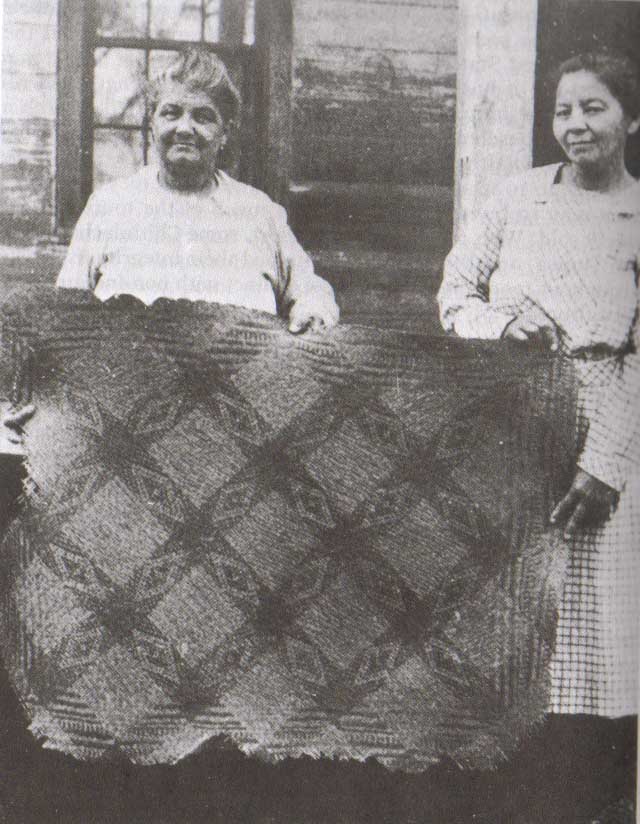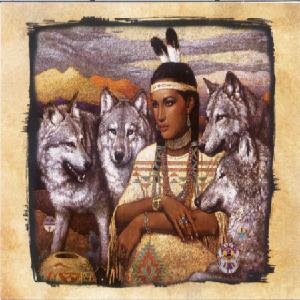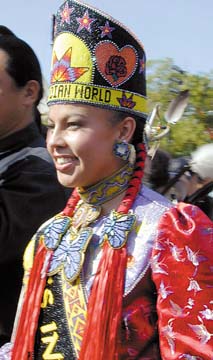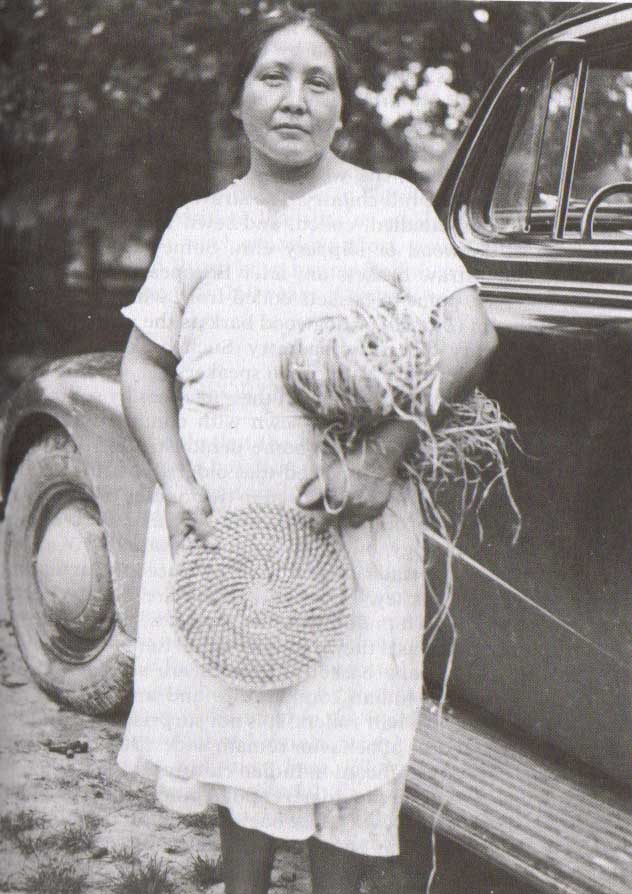|
Koasati Indians
making Cane Baskets |
|
|
None of the names of the first women in New Orleans
have survived.
They have left no written history, but standing on the
banks of the Mississippi in the curve the great river makes around the
French Quarter, we can imagine how hard life was for the early French
women who kept house and raised families in the fetid swamp, the Indian
women who brought their wares to market there, or the African women
sold on the slave block to serve local wealthy families or to work on
plantations.
There were Indian women in and around the swampy
settlement of New Orleans before 1718 when the French Canadian, Jean
Baptiste LeMoyne, Sieur de Bienville, brought his hardy group of approximately
300 men to build the city of Nouvelle Orleans, named in honor of the
Duc d'Orleans.
For centuries Indian tribes had used this spot in the
river's bend as a trading post, gathering from up and down river and
from the Gulf via Lake Pontchartrain to trade stories and goods at what
is today the French Market.
.
|
Indian women from the Choctaw, Houmas, Acolapissa and
other tribes peddled baskets of fruits, herbs and pelts at the markets. As
late as the 1830s Indian women in brightly colored scarves and long skirts
squatted along the streets of New Orleans selling herbs, spices and foods
from outlying areas.
 There
was a serious shortage of French women from the very beginning of Bienville's
settlement. Among the three hundred men he had managed to lure to New Orleans,
only twenty-eight were married, leaving poor prospects for the remaining two-hundred
seventy-two bachelors.
There
was a serious shortage of French women from the very beginning of Bienville's
settlement. Among the three hundred men he had managed to lure to New Orleans,
only twenty-eight were married, leaving poor prospects for the remaining two-hundred
seventy-two bachelors.
Predictably these men formed liaisons with Indian women,
but because the Indians were considered heathens and of a different race,
marriage with them was forbidden.
Some Indian fathers sold their daughters to white men, and there are cases
of Indian women living within the city limits and raising families with Frenchmen.
Given the language and enormous cultural barriers, these women must have lived
an alien, quasi-slave existence. That some deserted their French masters and
returned to their tribes is not at all surprising.
Some early French women came with their husbands who
had signed contracts in France with Louisiana proprietors to work as masons,
gardeners, blacksmiths, tailors and bakers. Their wives sometimes could find
work as midwives, weavers, cooks and washerwomen.
During th 1750s there was a migration of people from
Acadia, part of French Canada, who settled in the swamps south and southwest
of New Orleans. Known as Acadians - or Cajuns, few of them made their way
to the city in the early years.
Today the Cajuns are still basically a rural
people, although their cooking, customs and hospitality are often associated
with New Orleans.
|
Chitimacha
Women
with Cane Mat |
|
Black women were also brought into New Orleans at a very
early date.
Several free blacks arrived with French families as part of their
households from France, serving as maids and cooks. The city also became a
famous slave port soon after its founding.
Thousands of African women were
sold at auction blocks, separated from their husbands and children and subjected
to the worst indignities.
White slavery also existed. There are instances of poor
whites being kidnapped and forced to serve as indentured servants or slaves
during the 1700s, and more than one account of a white woman discovered in
New Orleans being held in bondage, especially if there was any suspicion she
had consorted with blacks.
There is no written history of the first women in New
Orleans, but a novel, Manon Lescaut, was written in 1753 by l'Abbe Prevost
of France with a correction girl as the heroine.
Years later it was twice
made into an opera - "Manon" by Jules Massenet and "Manon Lescaut"
by Giacomo Puccini. The character Manon Lescaut is believed to be the first
American literary heroine.
The vague historical mention of a Natchez Indian princess
burned at the stake is what is now Jackson Square in 1730, at the order of
the governor of Louisiana, probably refers to one such woman, who perhaps
was charged with conspiring with her tribe to attack the city.
Bienville's need to keep his men happy led to a plea in his earliest message
to the King of France for a shipment of marriageable women
. But what parents
in France of a virtuous daughter in the 1720s would send her alone on a long
and dangerous voyage, without hope of seeing her again? However, less virtuous
women were available; girls who had fallen into disfavor with their families,
orphans living on the streets of Paris, and many who were imprisoned in dungeons
and asylums.
So, the first French women sent to Louisiana in response
to Bienville's plea were taken from the prisons and off the streets of Paris.
Often in chains, they were put on ships headed for the New World.
Undernourished
and in poor health, many died during the months-long trip. Those who survived
were snatched up on arrival in the Louisiana capital of Mobile by whatever
man was fortunate enough to have his pick.
Some of these early women, called
"correction girls" fro the houses of correction from which they
were taken, eventually made their way to New Orleans.
 Members
of old French families in New Orleans generally trace their ancestors back
to the filles de cassette, convent-bred, country women, twelve to sixteen
years old from France, who reportedly arrived each carrying a dowry from the
King of France in a narrow wooden box called a cassette. Ironically, there
are no historic documents to support shipments of such women, causing their
existence to be in serious doubt.
Members
of old French families in New Orleans generally trace their ancestors back
to the filles de cassette, convent-bred, country women, twelve to sixteen
years old from France, who reportedly arrived each carrying a dowry from the
King of France in a narrow wooden box called a cassette. Ironically, there
are no historic documents to support shipments of such women, causing their
existence to be in serious doubt.
The Ursuline nuns in New Orleans, who, according to popular myth received,
housed, and guarded the filles de cassette until they were found husbands,
deny having had anything to do with such girls.
Their strongest evidence is
that the "casket girls," if they ever existed, would have arrived
between 1700 and 1725, while the Ursulines did not come to New Orleans until
1727.
|
|
 Indians,
French, Women of Color. Indians,
French, Women of Color. |
|
 There
was a serious shortage of French women from the very beginning of Bienville's
settlement. Among the three hundred men he had managed to lure to New Orleans,
only twenty-eight were married, leaving poor prospects for the remaining two-hundred
seventy-two bachelors.
There
was a serious shortage of French women from the very beginning of Bienville's
settlement. Among the three hundred men he had managed to lure to New Orleans,
only twenty-eight were married, leaving poor prospects for the remaining two-hundred
seventy-two bachelors. 






